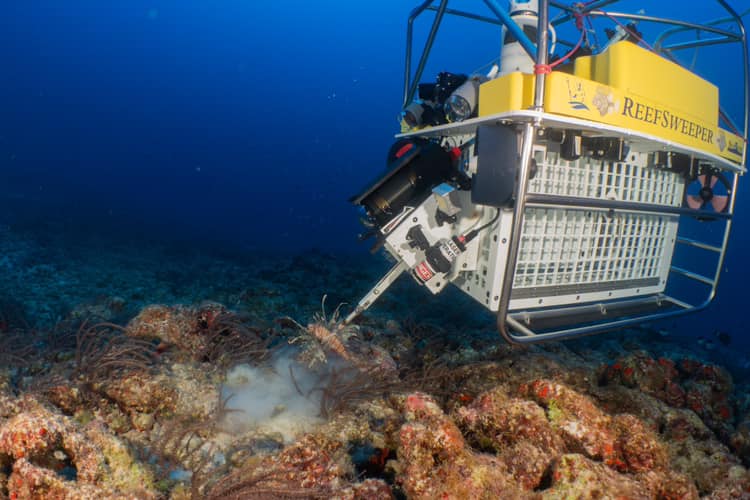The lionfish is a scourge in the Gulf of Mexico. It’s a beautiful creature, but not native to that body of water, and that causes problems.
Lionfish properly belong in the South Pacific and Indian oceans. But aquarium owners dump their tropical pets into the Gulf and into the Atlantic Ocean, where they face no real predators. The species is also very good at hunting fish that sustain coral reefs, like algae-eaters that consume bacteria that’s found on the coral.
So far, efforts to control the lionfish population haven’t made much of a difference. That could change, though, thanks to a new device built by Bermuda-based Atlantic Lionshare, which finds and spears lionfish.
Gavin Hunter is the company’s CEO, and says that even determining the scale of the lionfish problem is difficult.
“Counting fish is an impossible task,” he says. “A single female lionfish lays up to 3 million eggs in a year; we’ve got no way of determining exactly how many reach maturity, so it’s a big guess.”
Hunter estimates the lionfish population is doubling every year.
Atlantic Lionshare has developed a robotic vehicle called the Reef Sweeper. It’s designed to capture lionfish.
“We operate it from our boats, and it actually spears the lionfish,” Hunter says. “The lionfish have no sense of predators because they don’t have any natural predators.”
Once speared, the lionfish are held alive inside the machine, and eventually sold as sushi-grade fish.
“Nutritionally, they’re one of the best fish in the sea because they’re eating the juveniles of most of their prey,” Hunter says.
Juvenile fish don’t contain as much of the toxic substances found in adult prey fish, Hunter says.
The Reef Sweeper is about the size of a refrigerator, Hunter says. The vehicle doesn’t roll along the seabed, but moves more like a submarine. It uses propellers, and it can float.
Once a fish is speared, the harpoon retracts into the Reef Sweeper where the fish is “thrusted” into a holding cage. When the Reef Sweeper is full, it returns to a boat, where the catch is retrieved.
Hunter says his company intends to deploy hundreds of Reef Sweepers. The device is currently in the prototype stage of development.
Written by Shelly Brisbin.















